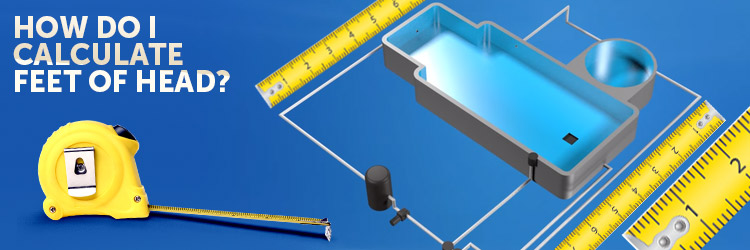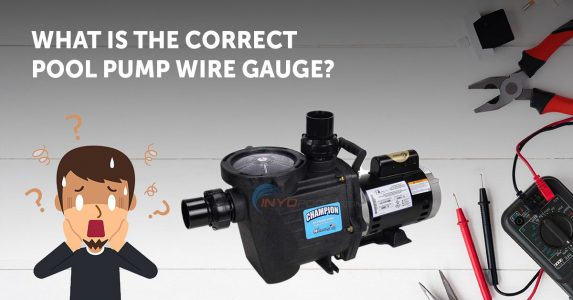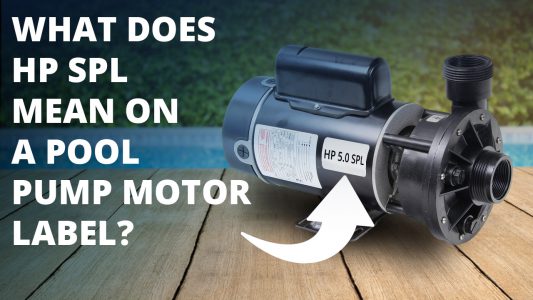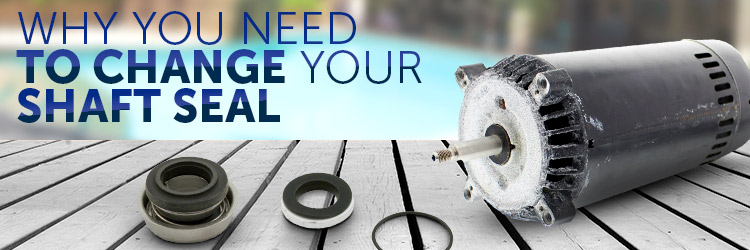OK, riddle me this, you’re standing in a pool store’s showroom and you’re in awe of all the shiny new pumps. You finally make your decision on the model you want and have a hunch it will work well in your 20 000-gallon pool, but the salesperson drops a bomb on your plans by asking the simple question, “What is your feet of head?” Wait a minute, what? My head is about 10 inches. but I’ve never actually measured my own skull…
Wrong head.
Total Dynamic Head (TDH) refers to the total equivalent height that a fluid will be pumped by taking into consideration any friction losses in the pipe. Essentially “dynamic head” is the measurement of resistance working against your pool pump as it pulls water from your basin and pushes it back to the pool. The total sum of the pipes’ lengths, rise in elevation and addition of 45-degree /90-degree turns will affect the feet of head number. All the aforementioned plumbing quirks add up to more friction the water accrues as it travels. The more friction, the harder the pump must work to push the water through the pipe, which demands that you go to a higher HP or use a larger pipe. If you need to install a new pump or replace your filter, you need to calculate the system’s feet of head to determine the best fit. A pump’s flow rate is dependent on the feet of head.
If you need to install a new pump or replace your filter, you need to calculate the system’s feet of head to determine the best fit. A pump’s flow rate is dependent on the feet of head of your plumbing system, and that measurement is featured in every pump curve chart. If you want to turn over your 20 000 gallons once in 5 hours, you will need to average at least 67 gallons per minute (GPM). We will use that GPM to calculate our pool’s feet of head.

Measure the Lengths of All the Pipes
Yes, I mean all. Measure the pipes’ lengths that span from your main drains, skimmers and any other suction ports that draw water from your pool. While measuring lengths, also note the depth of the pipe as well as the number of turns and the type (45-degree or 90-degree.) The type of turns will affect the friction loss as we total up at the end. Measure the lengths of the pressure side pipes in the same manner, noting the degree of turns and any valves you can see. The chart shows the feet of head per 100 feet of pipe according to the pipe diameter of Schedule 40 PVC in congruence with the flow rate of your pump. So, let us estimate you have 200 feet of 2” PVC with a flow rate of 70 GPM, your feet of head would be 15.2.
| GPM | 1-1/2" PVC | 2" PVC |
|---|---|---|
| 40 | 9.43 | 2.75 |
| 50 | 14.3 | 4.16 |
| 60 | 20 | 5.84 |
| 70 | 28.6 | 7.76 |
| 80 | 36.7 | 9.94 |
On top of that 15.2 feet of heads, you can add the rise in elevation from the pool’s surface to the pump. For example, if the pool’s pump is 3’ above your pool’s surface, add 3’ feet to 15.2.
Pipe section feet of head: 18.2
Because you know the gallons of your pool and you know that you want to turn over your water twice, you can calculate the desired rate of flow to turn it over in a period of 3-5 hours.
Add up the Dips, Turns, and Twists
We must now add in the effect of all the valves, turns and couplings in your plumbing line. Each of those plumbing add-ons tack on a value of feet of head to your plumbing line. The value will vary according to the flow rate you put in. I used 70 GPM as our flow rate in my calculations.
The table below provides the equivalent feet of straight pipe for representative connectors for 1 ½’ and 2’ at 70 GPM. The total of these values will have to be converted to feet of head as we will show in the example:
| Description | 1-1/2" PVC | 2" PVC |
|---|---|---|
| 45-Degree Elbow | 2.4 | 3.1 |
| 90-Degree Elbow | 7.6 | 8.7 |
| Check Valve | 1.7 | 2.2 |
| 3-Way Diverter Valve | 2.5 | 2.3 |
| 2-Way Diverter Valve | 1 | .7 |
| Tee | 6.2 | 7.5 |
| Coupling | 1.5 | 2 |
| Count | Description |
|---|---|
| 5 x 8.7 = 43.5’ | 90-Degree Elbows |
| 4 x 2.0 = 8.0’ | Couplings |
| 3 x 2.2 = 6.6’ | Check Valves |
| 1 x 2.3 = 2.3’ | 3-Way Diverter Valve |
| 60.4 / 100 x 7.76 = 4.69 | Total of 4.69 added feet of head for connectors. |
Total of 60.4 added equivalent feet of straight pipe.
To convert this value to feet of head, multiply 60.4 ‘ by the same number used in the length of pipe calculation above for 70 GPM and 2’ PVC diameter pipe, 7.76 per 100’ of pipe.
60.4 / 100 x 7.76 = 4.69
Total of 4.69 added feet of head for connectors.
Don’t Forget Your Filter, Valve or Heaters
Filters can be a real drag on water as it rushes through your plumbing. So, we must account for that extra resistance. Pentair has a thorough Head Loss Chart that lists the ratings for their products. You may not have a Pentair, but the ratings should give you an idea of where your similar sized filter will fall on the chart. For your specific model’s head loss rating, check your owner’s manual or contact the manufacturer. Click the chart for an expanded view.
As for heaters, the head loss varies depending on flow rate and model. Here is a graph of Hayward listed flow rates to give you an idea, what the ranges may be. To be on the safe side I would add 15 feet of head to the count for a preliminary calculation, but for an actual number you will need to contact the manufacturer for calculations.
| GPM | Feet of Head |
|---|---|
| 40 | 5.12 |
| 50 | 6.16 |
| 60 | 7.23 |
| 70 | 7.5 |
| 80 | 7.8 |
| 90 | 8.84 |
| 100 | 9.86 |
The final total:
Pipe lengths and rise = 18.2
Valves and turns = 4.7
Cartridge filter 70 sq. ft. = 7.5
Heater = 7.5
Total feet of head = 37.9












I do not understand why the size and number of return jets is not calculated into the equation. I am building a 9,500 gallon pool and am looking for a system that will deliver 60GPM and provide three turnovers in 8 hours. The pump, filter, 2″ piping and skimmer/drains will deliver that but one quote has four 1/2″ returns and the other has six 3/8″ returns. There is no way those returns can output 60 gallons per minute. Don’t I need a minimum of four 1″ returns to prevent back pressure reducing the flow?
This article is very confusing and not very useful for those many of us who are subsequent owners of a home where the pool was installed decades prior. There are too many variables to simply make an educated guess on the piping.
It seems the article referenced above by Steven on how to determine HEAD using gauges is more useful. However, if the goal is to determine GPM, would it not be even more useful to use a gauge that measure GPM, position it at each of the outlets and sum up the values of each?
New pool owner here with a probably dumb question. How do I measure all the lengths of pipe and twists/turns, when all the pipes are underground somewhere? Do I really need to dig up all around my pool to figure it out?
You can estimate the length of the pipe by measuring from the various suction points, following the likely path of the pipe. Skimmer pipes usually do not go under the pool to reach an equipment pad on the other side; these lines will be routed around the pool.
Chris, my pool is over 15 years old and I had no idea of GPM or TDH until this past year when I went out and bought Vacuum and Pressure gauges and made some measurements and converted to TDH then went to my Pentair Intelliflo VS Pump and pulled GPM of Pump Chart (based on TDH and RPMs). What I can tell you is that my optimum pump speed (for my pool) appears to be somewhere around 2,500 RPM (which equates to somewhere around 1.2 HP of my 3 HP Variable Speed Pump) and my TDH is ~45 and my flow-rate at this speed is ~65 GPM. I have long 2″ pipe runs to and from my Pool and Spa since my equipment pad is around the side of the house. Also, I have a Heat-Pump in the loop (but also a partial by-pass which was required for Heat-Pumps warranty). Hooking up the Vacuum and Pressure gauges takes about 10 minutes – you simply install into the Pump housing where the 2 plugs are. If you need additional information, let me know.
I talked to a pool guy who calculated the TDH of an existing system by installing a vacuum gage on the inlet side of the pump (there is a plug that you remove to install the gage) and reading the pressure on the filter gage. He got the formula from our local energy company who provided rebates based on this calculation they provided.
TDH = Vac inches X 1.13 + Filter PSI X 2.31
I purchased a home with an in-ground pool and single speed pump and I don’t know how it’s plumbed. I’m switching to a variable speed pump and want to know the GPM at different speeds so I can program the system to turn the water over about 1.5 time a day.
I plan to backwash the pool and see how long it takes to fill a 5 gal bucket. I have about 60′ of 2″ pipe sloped slightly uphill which should simulate the three return lines to the pool.
I think the most accurate way to measure gpm is to to attach a hose on each of the three return lines because, I believe, that is true gpm. The water is a bit cold now though.
Thoughts?
And what happens is I have no idea about where the pipes are or how long they are second owner of the house. I just want I pump that works wtf. To much information. 🤬🙃🤬
If you have a pool pump in place and you want to figure out run times, you can skip this method by using trial runs for run times, and RPM setting(dual and variable speed motors only.) If you are replacing a pump, then you may try finding a replacement with a similar pump curve. For example, If you have a Pentair SuperFlo, you may replace it with the same horsepower SuperFlo, or a Hayward Super Pump, or Pureline Prime.
My head now spins…
So I tried to follow all the detailed steps (thank you!),
Then I got to the comments and the engineers blew the whole thing up! Without the great step by step explanations.
I’ve got 80 Ft 2″ PVC x 7.76/100 = 6.2 Head Feet?
I’ve got 143 Ft 1.5″ PVC x 28.6/100 = 40.9 Head Feet?
Then the 16 2″ 90 deg elbows = 16 x 8.7/100 = 1.4 Feet? Do I need to convert this to Head Feet? How?
Would be nice if we had a link for the STA-RITE CHART – Google Sta-Rite only gets a sales site.
Maybe someone can help?
Thanks!!!
I have a Paramount in floor cleaning system. In the manual it states:
“The pump must be a high head pump capable of 60 GPM at 70 ft. of head and the filter should be a minimum of a 4.9 sand filter with a two inch valve, 36 sq. ft. DE filter with a two inch valve, or a 200 sq. ft. cartage filter. This will be sufficient to give the required 50 GPM flow to the cleaning system and allow 10 GPM for the possible fixed nozzle. Any additional water needed for spa spill ways, water falls or other water features must be factored in to both pump and filter sizing.”
The water valve has two fixed nozzles that flow all the time
and steps between:
1. Two rotating Nozzels.
2. Two rotating Nozzels.
3. Two rotating Nozzels.
4. Four rotating Nozzels.
5. Three eyelet jets.
I am estimating the pipe lengths and elbows from water valve to Nozzles..
With this configuration what do I use for the feet of head calculation for nozzles and the water valve?
Do I only use the highest feet of head and the fixed nozzle lines in the calculation?
Can I install a Variable Speed pump to run the cleaning system for a minimum amount of time and then use a lower speed to cycle the water?
I want to thank you for the information in the calculating of the TDH. I was wondering if you have charts for pipes and fitting going up 6″ PVC? As we have some piping of 3″, 4″ and 6″ schedule 40 pvc. I appreciate any help on this you may have.
Those would be more for serious commercial application with a few more variables and higher flow rates involved. I did have a PDF from Sta-Rite that listed a lot of TDH values for different elements of plumbing but it only went up to 2-inch. If you’re building a pool like that, there should be an engineer or contractor that can give you an idea of what the TDH will be. Or you can go by the current model of your pool pump.
Rigging up a makeshift TDH meter is simple in principle – its called a manometer. Its a water, part-filled U-tube and you could make one on a plank of wood with thin plastic tube. When vertical you will need about half full of water and read off the difference in height directly in feet. You connect it accross the pump. It would be pretty interesting for you to try this to validate the calculations. Thing is with 100 feet of 5 or 10mm tubing and a tall board or convenient wall you could cheaply measure this.
Preposterous. Measuring a 50 ft TDH across a pump would require a 50 ft. plus tall manometer. Much easier to connect a simple Bourdon tube gage at two points, suction and discharge, measure each reading, and multiply by 2.31 to get TDH. If the lines are the same size the difference in dynamic head will cancel out. It’s pretty easy to let perfect be the enemy of good. Measuring with a gauge is easily within 10%, more than enough accuracy for swimming pool pump hydraulics.
There is a meter on the market now that measures TDH…can you just use it to get a fairly accurate reading? Pros and cons please.
I have not seen a TDH meter. Do you have a link to it? That would make the whole process simpler, and I could add it to the article.
The only downside I could foresee is the cost. Take into consideration, that a homeowner would only be using this once. A meter that costs $50 may be manageable, but one that costs $200 would likely not be worth it.
I’m a history teacher. Would prefer to avoid the math. Here’s my situation. My in ground pool is 16 x 32′ and averages 5′ deep. My husband refuses to pay for heater. Ive decided to use 1″ black plastic pipe, snake it horizantally back and forth along my wooden pool fence. If I run it 50 ‘ then loop it on a hook and run it back to beginning point, then another loop and so on. My pool is in central Florida. Temps in spring and fall average 65*. I want to raise temp to 85*. So, how much pipe do I need to raise temp 20*?. Should l have my pool guy put in a bigger pump or add a second one?
Thanks so much,
Sandy
Y for a heater
I agree with you. Thank you, Matthew!
All these questions, and differing answers, and replies…
Just go to show that nothing about this – is really “simple”.
It is what I call a “non-trivial” task.
It is going to take some TIME AND EFFORT – to figure out each unique pool!
Not that it can’t be done by a lay-person… Most people probably could do it, given enough effort.
But even for me, as an engineer – I’m going to have to sit down and run the numbers! Which is going to take time. This is not a 5 minute, back of the napkin exercise.
But what Matthew has done, is provide a very excellent start.
With that start, and some help from the Internet… One can figure it all out.
Honestly, your proposed plan, would not work.
(Good creativity, however it just won’t work – economically)
Probably, the best idea, is a rooftop solar system AND an inexpensive pool cover.
This will EXTEND your summer swimming season by several months or more.
Yes, basically a just a bunch of black pipes – except it adds up to thousands of feet, and a roof gets sun all day long, while a fence only gets sun, less than half the day.
Living in central Fl myself, once winter comes and temps fall below 65, you will not be able to keep the pool at 85F, not with solar. Although, it will also help speed up the heating of the pool in the spring, so “summer”can start early.
Sorry, there is no “easy” or “almost free” answer on how to heat your pool.
Besides the expense of the roof solar system, you also have to pay for extra electricity to pump the water, for 10-12 hr/day. Again, no free rides.
The good news, is the price of these systems have really fallen, so it might not cost as much as you think.
Seems like more people trying to prove you wrong than saying “thank you” for the info. “It’s better to be kind, than to be right.” Thank you, Matthew!
How does vertical rise impact feet of head? Have a pool on the second floor, but the pump/filter is on the ground about 10′ below the bottom of the pool.
How the heck do you find out how much pipe and elbows you have if its buried in the ground?
Well, you can guesstimate a number of turns based on the position of the pump equipment in relation to the drain points. As for the length of pipe and rise, should be figured out by measuring the distance of the main drains and skimmers to the equipment.
Or you can reference a builder’s drawing.
How does this calculation change if the pump is below the waterline?
In my case, my pool equipment is about 3 feet below the waterline. The pipes from the skimmer/return lines to the pump are about a foot lower than the equipment (making it 4 feet below the waterline).
Thoughts?
Using 2.5″ pvc pipe and fittings
90 DEGREE 10 10 100
45 DEGREE 7 5 35
PIPE LENGTH 331 331
GATE VALVE 6 8 48
514/100
5.14
FILTER 7.5
HEATER 7.5
20.14 TOTAL HEAD
This seems very low. Please help!
What if the water is pumped up to a solar heating panel on the roof of the house. So pool is 9 feet deep and solar panel is 20 feet up on roof. Pump to roof pipes are about 70′ along garden wall, 20′ up to roof and back.
I also have a solar panel in my garage attic close to 20 above pump, then the pool base of 9 feet, along with 75′ along our pool fence. No reply yet?
If I have two heaters, do you count the head for both heaters or only one?
Count both
Wrong. Nobody hooks up pool heaters in series. The second heater would overheat. The flow pressure drop calculation will have to account for the flow being divided between two parallel heaters, complicating this simple analysis, but hydraulic network calculations do it all the time. For a simple calculation like pool circuit pressure loss, it’s no big deal. Think about it. Two heaters in parallel, or any pressure drop inducing component, generate less pressure drop than one.
Wow thanks for the info i’m going to use it for for my science fair project! p.s i love how you decorated your website:)
I’m not an expert but the calculations for the vertical rise and fittings seem incorrect.
Per the following article, I believe the vertical rise would be calculated from lowest point drain PVC to pool pump subtracting water height: (1.5 feet PVC below drain + 2 feet from top of water to pump = 3.5 feet vertical rise)
http://www.marchpump.com/blog/how-to-calculate-total-dynamic-head-for-industrial-pump/
The friction loss for fitting is expressed in “equivalent feet of straight run pipe” for the same size pipe. In other words, take # of elbows and multiply by equivalent straight run length for 1 elbow then use the friction loss for straight pipe. Using the STA-RITE tables, 1 elbow for 2″ pipe would be equivalent to 9 feet of pipe length. So for 5 elbows that would be 5 * 9 = 45 feet. Using your table for straight 2″ pipe that would be 45/100 * 7.76 = 3.492 feet of head. If you do that for the rest of fitting I’m pretty sure you won’t get anywhere near 58.2 feet.
Also, STA-RITE tables seem very high compared to:
http://www.spearsmfg.com/IP-4/05%20Engineering%20and%20Design.pdf
https://www.plumbingsupply.com/flowchart.html
In these table, 1 elbow would be in the neighborhood of 6 equivalent feet of straight run pipe compared to 9 for STA-RITE.
I too question the “dips, turns and twists” total. Matthew, shouldn’t we apply the ‘7.76 per 100 feet’ factor to this?
58.2 x .0776 = 4.52 for a total of 43.7 instead of 97.4
Please help me as I try to calculate TDH. Every chart for 90 Degree elbow is different! I know I’m missing something. I’ve got 10- 2.5″-90 degree elbows. Using the chart, I calculate 10*10=100. Thats just elbows. I got 45’s and 330 LF of 2.5″ pipe!
Thanks in advance.
And what about using “Long Radius” elbows? Wouldn’t that have any effect in lowering the resistance for a 90 deg ell?
Absolutely correct!
In fact, one should ALWAYS use Long Radius elbows, rather than a single 90 deg or even two 45 deg elbows (must be separated by minimum 4*Diameter) .
A Long Radius elbow is roughly 250% more efficient.
For a 2″ pipe, here is the difference in “Equivalent length (in feet) of straight pipe”:
Example:
Long Radius elbow: 3.6 eq. feet
(2) 45 deg elbow: 5.4 eq. feet (must be separated by minimum 8″)
A 90 deg elbow: 8.4 eq. feet
Thus, one could save close to 5 ft per connection, times say up to 20 connections in the entire system (including all the buried ones) could add up to say… 100 eqv. feet in savings, which in turn, could lower the total head.
Thus one could (maybe, just maybe) move down to a lower hp pump, and save considerable energy over the life of a pool (say 30+ years).
Even if you can’t move down in hp, you are still saving energy, by reducing the load on the pump motor.
The downside is it takes more space (and good planning) to use the Long Radius elbows, and many people try to squeeze their pool plumbing (pump, filter, heater, valves) into the smallest space possible.
(Meanwhile, any dummy can use a bunch of 90 deg elbows.)
Also, keep in mind that the connectors, add up to anywhere from 5-10% of the entire head, depending on your pool size and design. So your actual energy savings, could be very small, maybe as small as only 1-5%. But even 1% (times 30-40 years), is still savings. Energy Efficiency is all about squeezing out 1% here, 2% there and getting all those small savings to add up to something substantial.
The bottom line is that most pool contractors are lazy and don’t do it. After all, they don’t care about the efficiency of your pool system – you are paying the electric bill, not them.
Even my own pool – built 24 years ago – has a ton of 90 deg elbows, since back then – no one really cared about energy efficiency. So in a few years, when I am ready to replace everything, and install a modern automated pool… I’ll dig up that whole area and re-plumb it all neatly to get rid of that spaghetti mess and make it a truly energy-efficient system.
So if you are building a pool new, or re-plumbing an existing pool, one should take the extra effort, to plan out the plumbing, to be the most efficient and hopefully save a little money in the long run.
Hi, I have a question that bugs me.
There is a table of data , to calculate the ” feet of head ” of my pool.
GPM 1-1/2″ PVC 2″ PVC
40 9.43 2.75
50 14.3 4.16
60 20 5.84
70 28.6 7.76
80 36.7 9.94
if I know the GMP pump that I need to buy why all the calculations? I do not know what is the GMP of the pump that I need to buy – yet to calculate “feet of head ” I have to know. Otherwise I can not do the calculation. Am I missing something?
Thank you for you advise, Jeno
The gallons per minute (GPM) of a pump is determined in part by the feet of head. The output of a pump can vary by 40 or more GPM depending on the feet of head, and style of pump, The charts in the article are there to give you an idea how GPM is affected by the pipe size.
See the example below of a WhisperFlo pump curve; the lines labeled by letters are horsepowers from .5 and up. You can figure out the approximate feet of head using the general guidelines provided in the article. Using that feet of head calculation, you can use the pump curve to figure out the horsepower needed to match the GPM.
In the “Dips and Turns” section, a number of 1.5 inch items have lower head than the 2.0 inch items, which seems very wrong.
Also, it would be nice if you could point to the reference material for the standard items (pipes, ells, valves, and so on) so that one could compute things for different flow rates, etc.
Bob,
It has been awhile since I wrote this but, one of the sources I used was Sta-Rite’s Friction Loss Chart.
In the chart, you can see that 1-1/2″ has lower friction loss than 2″.
Great work Matthew, one of the best explanations I’ve seen for this subject. One quick note about the friction loss in fittings. There is a substantial difference with threaded vs. slip fittings. Here is a link to a chart I often use for my calculations.
http://www.engineeringtoolbox.com/resistance-equivalent-length-d_192.html
Thanks, Shawn. That page is a nice find, good info.
The chart is for equivalent feet of straight pipe, not for head. The 58.2 feet for the valves gets added to the 200 feet of straight pipe. 2.58 x 7.76 = 20 ft of head.
Also the lift is measured from the water surface elevation of the pool, so if the pool is 6′ deep the static lift would be 3′ in your example. The head losses for filter and heater seem reasonable.
The TDH would then be 20+3+7.5+7.5 = 38 feet.
(I’m an engineer and I do this for a living)
Jack
Thanks for the clarification as I was getting way too much head with the bends I had and it did not make sense. There are 13 bends that the previous owner installed that I can see in my system and that was giving me over 200 head but when I add it to the feet of pipe I am only around 38 feet of head.
yup, we r also engineers, do many very large pumps.
his head is way out of line.
i actually dont agree with the lift head, i feel using the skimer as the surface
plus the lcation of the pump lift is plenty. might add a few ft head to calcs as safety
Wrong. There is no net elevation change, or lift, to be added to pool pump calculations. The only exception would be to lift to an open water feature or initially filling an elevated solar heater, neither of which are likely to matter. You calculate from free surface to free surface. All the elevation changes net out to zero in a hydraulically filled system.
name James from Kenya can you send me a pdf of making a swimming pool from the beginning to end
@Matthew can you send me a pdf break down calculation of how to measure 2″ PVC pipes and 2″ fittings? With illustration diagrams if possible of feet of head for a pool.
Because..I want to get a pump that will fit in my(10×6)m with 1.5m deep and shallow depth of 1m.
Thanks very much for your help
This is because of the surface area inside the pipes. a 2″ pipe has more surface area than the 1.5″ pipe, so naturally more friction is created, thus a higher head value. Although, the 2″ will allow for a higher flow rate, so that should also be taken into consideration when sizing your pipe, especially for new builds.
Honest question: why are there so many “engineers” looking up how to calculate feet of head, if you already know the answer?
And since it is so clear cut your method of calculating feet of head, why do you all keep disagreeing?
Ha, ha, ha,…..
Big thumbs up to you. When did “engineers” have time to read these articles, and when did engineering degrees stop requiring English and spelling?
The smaller ID pipe has less inside surface area and therefore less friction.
Wrong.
It has a higher friction relative to the volume of water in the pipe. As the pipe diameter increases the volume increases faster than the surface area.
ANSWER TO: In the “Dips and Turns” section, a number of 1.5 inch items have lower head than the 2.0 inch items, which seems very wrong.
YOU ARE RIGHT! THAT CHART IS WRONG!
Speaking as a mechanical engineer, the FIRST RULE OF ENGINEERING:
DO NOT MESS UP YOUR – UNITS OF MEASURE!!
Another minor rule is: You can’t mix and match charts…
If you are going to use a chart, you have to use the whole chart and only that one chart.
If you look at MATTHEW SIMMONS’s numbers:
Most do not match the Sta-Rite’s Friction Loss Chart – AT ALL!!
THE REAL ANSWER: USE THE STA-RITE CHART
=========================================================================
The real reason that the numbers for the “DIPS AND TURNS” look funny is because:
a. It is WRONG!!
b. You have to realize that the two charts (“Straight” vs “Turns”) use 2 fundamentally different units of measurement.
– Straight piping is measured in “Loss of HEAD” (measured in head-feet)
– “Dips and Turns” is measured in “FEET” (measured in feet)
c. Since you have different units of measurement, you have to convert units.
For example, for the STANDARD TEE, in Plastic:
1.5″ = 13 ft
2.0″ = 17 ft
Looks funny right? That’s because we have to convert!
Converting to “LOSS OF HEAD” (at 70 gal/min), we get the following:
1.5″ = 13 ft * 28.70 head-ft / 100 ft = 3.70 head-ft
2.0″ = 17 ft * 8.53 head-ft / 100 ft = 1.45 head-ft
Thus, you can now see that the HEAD LOSS of a 1.5″ Tee is more than double that of a 2.0″ Tee.
Therefore, the lesson learned is:
a. One must use the same chart for all calculations
b. One must use the chart properly, by realizing where different units are applied.
I realize this is a lot of math for the non-engineer.
However, if you go can through the MATTHEW SIMMONS’s original example, and fix all the values, using the STA-RITE chart, you will gain the experience needed to calculate your own pool.
PS I typed this quickly, on the fly. So if I made an error, so be it.
That’s why if I were doing this for real, I would sit down and check/recheck/recheck all my values and calculations.
In fact, That is my SECOND RULE OF ENGINEERING:
Check and Recheck, then Recheck again!